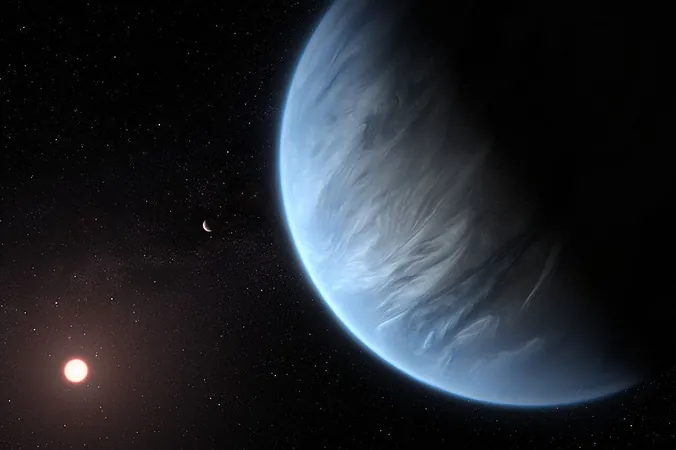
Are We Underestimating the Atmospheric Mix on New Planets? Shocking Discoveries Await!
2025-03-27
Author: Ming
Recent research has unveiled an astonishing twist in our understanding of planetary formation: the atmospheres of young Earth-to-Neptune-sized planets might not be the simple compositions we once thought. Instead, they could feature a perplexing mixture of hydrogen and water, igniting a debate about the dynamics of planet development.
Scientists at UCLA and Princeton have challenged the traditional model of planet formation, which assumed that key components—gas, ice, rock, and metal—remain inert with one another. They discovered that under the ungodly heat and pressure of emerging planets, water and hydrogen can chemically interact, leading to unexpected atmospheric compositions as well as significant phenomena like deep atmospheric "rainfall."
Planets typically develop with a hydrogen-rich atmosphere, shaped by their interactions with a molten core. Previous studies indicate that the most prevalent planets in our galaxy fall between Earth and Neptune in size. Understanding the complicated relationships between these atmospheres and their interiors is essential for deciphering planetary evolution.
However, replicating the extreme conditions of young planets in laboratory settings is nearly impossible due to the sheer pressures and temperatures involved. Researchers used advanced supercomputing resources to conduct quantum mechanical molecular dynamics simulations to model interactions between hydrogen and water at varying pressure and temperature levels.
As our Earth-like planets start to cool down, the research shows a startling shift—water begins to condense and form clouds in the atmosphere, eventually leading to a complex layering where heavier water precipitates downward while lighter hydrogen ascends. This process creates a rich hydrogen atmosphere on the outside, contrasted by a water-dominant inner composition.
Furthermore, this atmospheric transformation could play a crucial role in explaining why Uranus emits significantly less heat compared to Neptune, despite their similar sizes. It has been posited that the "rainout" of water might be more pronounced in Neptune, generating elevated internal heat.
The implications of these findings extend beyond our solar system. For example, exoplanets like K2-18 b and TOI-270 d, which exist in the habitable zone with hydrogen-rich atmospheres above water oceans, may drastically differ in structure and thermal evolution than previously believed. If temperatures are sufficiently high, these exoplanets might entirely lack the separation of hydrogen and water, forming a homogeneous fluid.
Researchers, including Hilke Schlichting, a co-author of the study, emphasize that if substantial mixing occurs within a planet’s interior, realm structures and evolutions could radically differ from the existing models popular in astrophysical studies.
As we continue to explore our universe, the revelations from UCLA and Princeton's findings urge scientists to rethink what we know about planet formation, potentially reshaping our search for habitable worlds among the cosmos. The universe is full of surprises, and the secrets of these new planets might just rewrite the very laws of planetary science!



 Brasil (PT)
Brasil (PT)
 Canada (EN)
Canada (EN)
 Chile (ES)
Chile (ES)
 Česko (CS)
Česko (CS)
 대한민국 (KO)
대한민국 (KO)
 España (ES)
España (ES)
 France (FR)
France (FR)
 Hong Kong (EN)
Hong Kong (EN)
 Italia (IT)
Italia (IT)
 日本 (JA)
日本 (JA)
 Magyarország (HU)
Magyarország (HU)
 Norge (NO)
Norge (NO)
 Polska (PL)
Polska (PL)
 Schweiz (DE)
Schweiz (DE)
 Singapore (EN)
Singapore (EN)
 Sverige (SV)
Sverige (SV)
 Suomi (FI)
Suomi (FI)
 Türkiye (TR)
Türkiye (TR)
 الإمارات العربية المتحدة (AR)
الإمارات العربية المتحدة (AR)